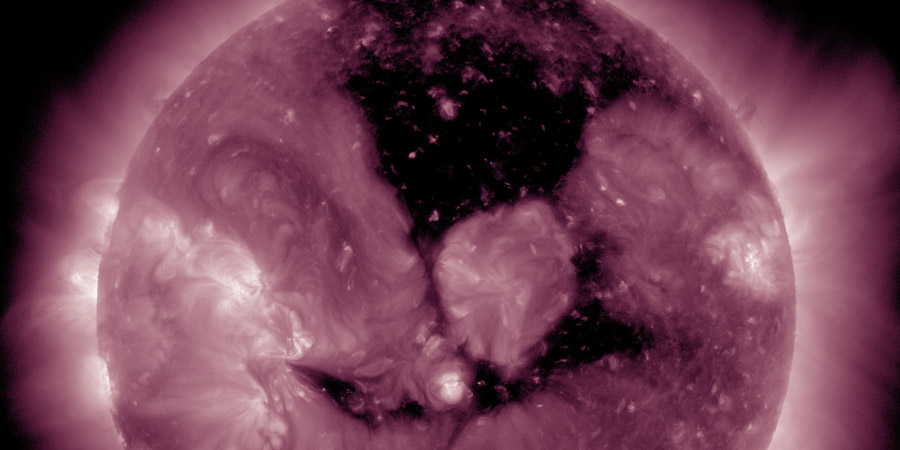Large coronal hole faces Earth
Tuesday, 14 June 2016 08:49 UTC

It's summer in the northern hemisphere and that means our space weather team shifted to a lower gear. We might not put out as much news as you are used to from us but we will try to keep you up to date as much as possible if there are any major events.
Lucky for us, the Sun has decided that this is an excellent time to take a nap as there is very little solar activity worth mentioning. Only two sunspot regions can be found on the Earth-facing solar disk today but they are unlikely to produce C, M or X-class solar flares.
That leaves us with coronal holes as the primary source of enhanced solar wind conditions and what an excellent timing: two days ago a very large coronal hole started to face Earth and we should expect enhanced geomagnetic conditions in the days ahead.
The solar wind stream from this large coronal hole will likely arrive tomorrow and will for sure be of interest for our friends in Tasmania and southern New Zealand as minor G1 geomagnetic storm conditions will be possible. The nights are now very short in the northern hemisphere so only those on the slightly lower latitudes might have a chance to see aurora but only if there is sufficient geomagnetic activity. Perhaps sky watchers near the US-Canadian border will have a chance as well as the nights are slightly longer thare compared to the same geomagnetic latitude in Europe. Be sure to keep an eye on the data that we provide here on SpaceWeatherLive in the days ahead.
A coronal hole is facing Earth. Enhanced solar wind could arrive in ~3 days - Follow live on https://t.co/T1Jkf6i4Cb pic.twitter.com/ASf69JKUx9
— SpaceWeatherLive (@_SpaceWeather_) 12 juni 2016
Thank you for reading this article! Did you have any trouble with the technical terms used in this article? Our help section is the place to be where you can find in-depth articles, a FAQ and a list with common abbreviations. Still puzzled? Just post on our forum where we will help you the best we can!
Latest news
Latest forum messages
Support SpaceWeatherLive.com!
A lot of people come to SpaceWeatherLive to follow the Sun's activity or if there is aurora to be seen, but with more traffic comes higher server costs. Consider a donation if you enjoy SpaceWeatherLive so we can keep the website online!

Space weather facts
| Last X-flare | 2024/03/28 | X1.1 |
| Last M-flare | 2024/04/23 | M3.0 |
| Last geomagnetic storm | 2024/04/19 | Kp7 (G3) |
| Spotless days | |
|---|---|
| Last spotless day | 2022/06/08 |
| Monthly mean Sunspot Number | |
|---|---|
| March 2024 | 104.9 -19.8 |
| Last 30 days | 125.4 +21.1 |


